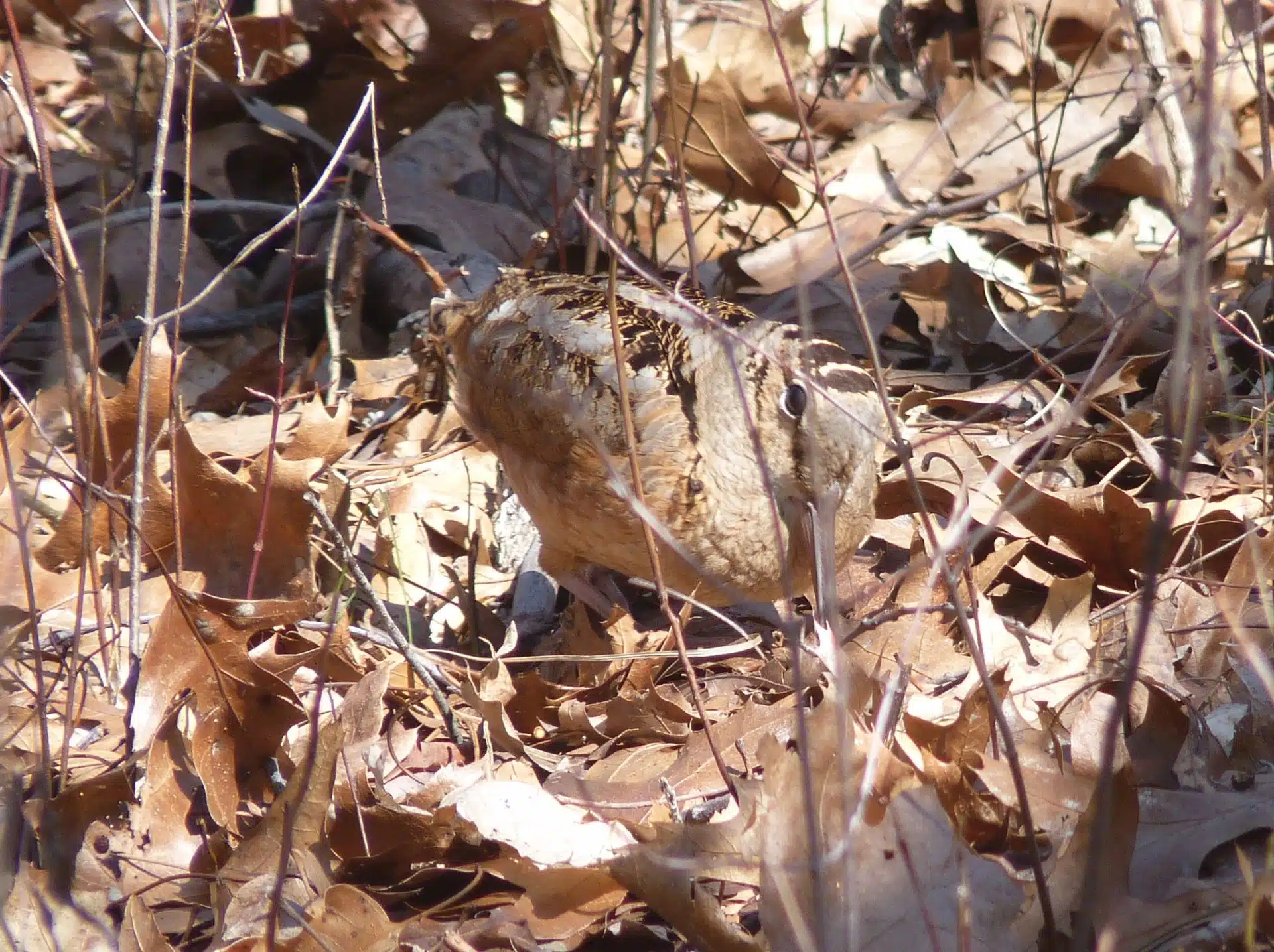Birds
American Woodcock
Scolopax minor

Voice: A nasal “peeent” call by both sexes
The American Woodcock, otherwise known as a Timberdoodle, is a shorebird. However it is not
like a typical shorebird spending its time on shores of beaches and lakes but rather it spends its
time in wet forest and fields. In Ohio, March-October, during the day the American Woodcock
can be found it soggy forests camouflaged against the forest floor but in early spring during
dawn, dusk or all night during a full moon, the male woodcock ventures out into the field where it
sky dances to attract a female. This elaborate display of the male woodcock’s dance is filled with
amazing movements and sounds. It starts off on the ground with “peents” calls then it continues a
spiral flight upward. On its flight upward at about 50 feet his wings make a twittering sound.
When male reach as high as 300 feet he descending in a zig-zag, diving fashion, calling as he falls
down. As he comes near the ground he lands silently, near a female if she is present; then starts
“peenting” again. Several males can display in the same field at the same time competing for the
females.
After mating, the females build the nest, incubate and care for the young with no help from the
males. The female construct her nest by scratching depressions into the ground then lining the
nest with a few twigs, grasses or dead leaves in open woods or overgrown fields. She typically
lays four buff with brown spotted colored eggs. She incubates the eggs for approximately 20-22
days. Once all the chicks have hatched in a few hours they all leave the nest. A few days after
hatching the chicks are probing the ground for food. Just like the adult woodcocks the young have
a flexible tip bill that is specialized for catching earthworms, which are a major component of
their diet. They also will eat insect larvae and other invertebrates. Until about five weeks when
the young become completely independent, the female cares for them. She may display a brokenwing act when a predator or human gets to close to her young.
The American Woodcock is one of the few shorebirds that regularly hunted for sport.
According to the National Audubon Society, “The U.S. Shorebird Conservation Plan lists
American Woodcock as a “Species of High Concern,” based largely on decreasing population
trends, but also on threats on breeding grounds and threats on non-breeding grounds. It is
estimated that perhaps up to two million American Woodcock are shot annually across its range,
but it is unclear if this hunting affects population trends. It is believed that a decrease in the
quality and quantity of woodcock habitat, resulting from a decrease in the rate of early secondary
succession, is a major factor in the decline of American Woodcock across its range. In addition,
the draining of swampy areas and bottomland hardwood forest has contributed to the degradation
of suitable woodcock habitat.”
What you can do? Support local and national organizations like The Holden Arboretum, parks
districts, Important Birds Areas and U.S. National Wildlife Refuges which provide essential
habitat for American Woodcock.
Photo Credit: Benny Mazur from Toledo, OH, CC BY 2.0, via Wikimedia Commons
Best Location to View: Bole Woods
Color: Long straight bill; large black eyes; small head compared to chunky body. Body mottled brown, black and gray. Sexes look alike; females larger.
Range: American Woodcocks breed from the Atlantic coast west to the edge of the Great Plains and from southern Canada to the Carolinas and Arkansas. They are permanent residents from west Texas through the southeastern United States.
Size: 10-12"




